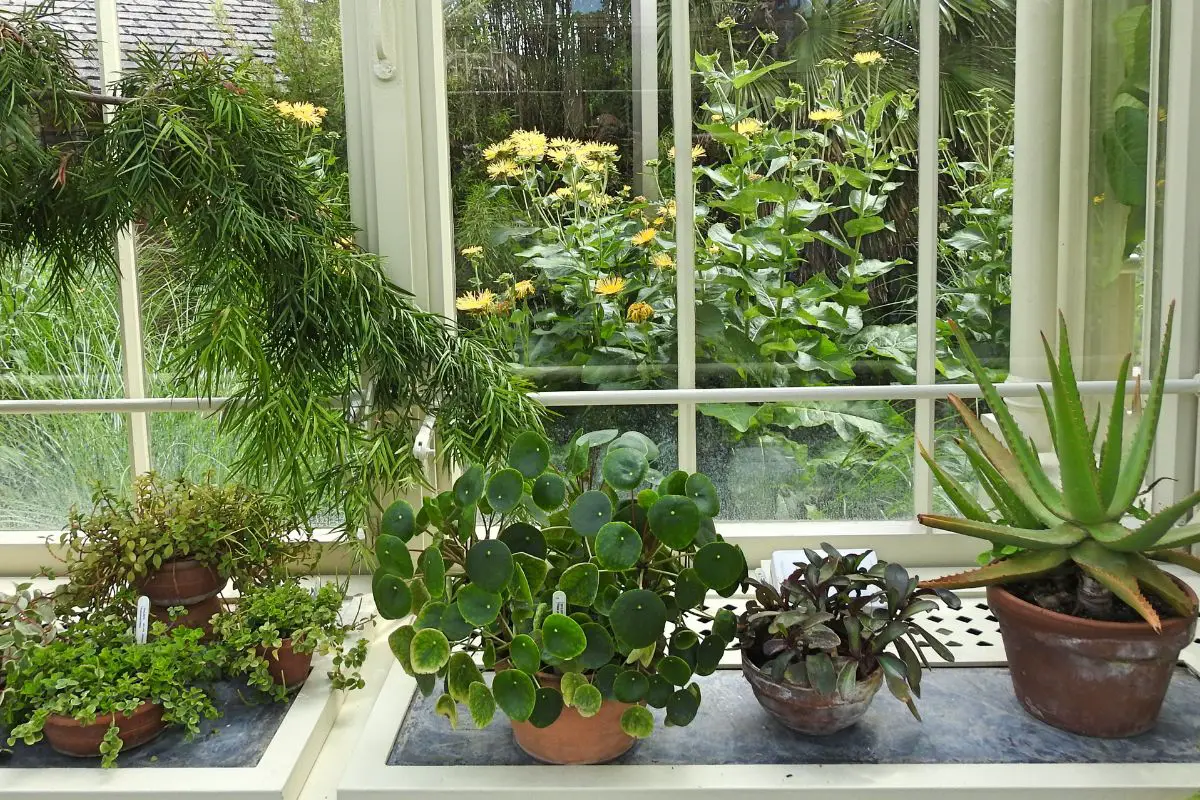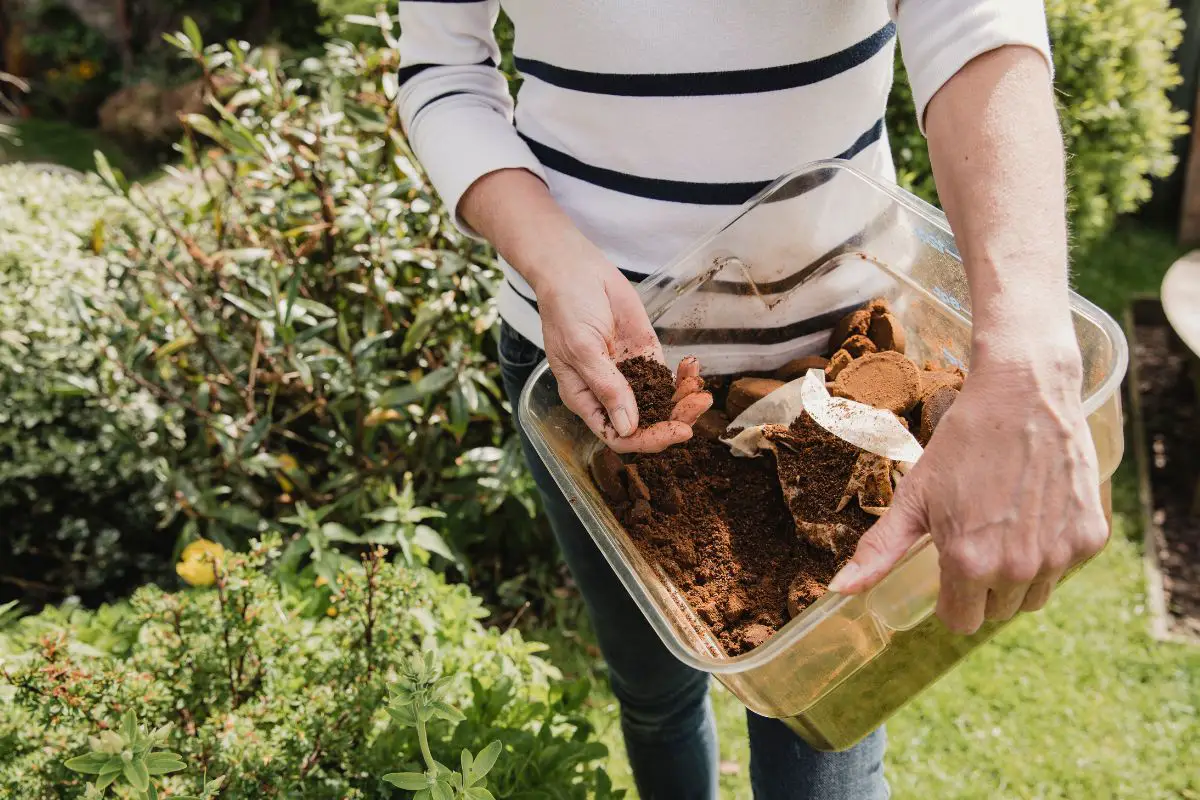The use of coffee grounds in farms and gardens is a topic that’s highly debated. Most gardening hacks suggest that coffee grounds are beneficial to houseplants. While some people agree with this, others say that the use of coffee grounds for growing plants isn’t worth your time. So, the question remains, Are coffee grounds good for houseplants? Read on for insight.

Are Coffee Grounds Good for Houseplants?
Yes, coffee grounds are good for houseplants. Coffee grounds can be used as fertilizer, compost, and pesticide for your houseplants. Furthermore, they contain trace amounts of potassium, phosphorus, calcium, nitrogen, magnesium, zinc, and copper. These nutrients aid in the growth of your houseplants. However, you need to use your coffee grounds correctly to reap the benefits. Incorrect usage of the grounds can lead to fungal overgrowth, excessive water retention, and even impair the growth of the houseplants.
Therefore, this article will discuss the benefits and drawbacks of using coffee grounds on your houseplants, how to use coffee grounds on your houseplants, and the types of houseplants that like coffee. Read on!
Benefits of Using Coffee Grounds On Your Houseplants
Here are some benefits of using coffee grounds on your houseplants.
1. Coffee Grounds are Rich in Nutrients
First and foremost, coffee grounds are rich in nutrients that plants need for their growth. These nutrients are classified into three groups. They include:
- Macronutrients – They are needed in the largest amounts by plants
- Secondary nutrients – They are needed by plants in slightly lower amounts
- Micronutrients – They are needed by plants in very small amounts
Usually, most plant fertilizers have the NPK abbreviation in their packaging that represent the three essential macronutrients that are needed by plants. The NPK abbreviation stands for nitrogen, phosphorus, and potassium. Luckily, coffee grounds contain all three macronutrients for plants. When nitrogen is used in houseplants, it helps improve the stem and foliage growth of the plants and gives the green leaves their dark color. Coffee grounds contain about 2% nitrogen. Phosphorus in coffee grounds helps form new roots in plants, while potassium makes the stems of plants strong thus aiding in their growth.
2. Coffee Grounds Retain Moisture
Mixing coffee grounds with potting soil before planting your houseplants helps improve the soil structure of the plants as well as retain moisture. Additionally, coffee grounds contribute to the growth of microorganisms in the soil thus improving its quality and nutrient availability. To reap the benefits, mix a handful of coffee grounds with the potting soil then ensure that you regularly water your houseplants since coffee grounds are hydrophobic when they dry out completely.
3. Coffee Grounds Are Eco-Friendly
Most people consider coffee grounds as garbage and easily throw them away. However, using coffee grounds for your houseplants is one way of making your indoor garden eco-friendly. Furthermore, naturally use coffee grounds to improve your houseplants without the use of synthetics. Coffee grounds for your houseplants serve a similar purpose to fertilizers and are sustainable.
4. Coffee Grounds Are Good for Compost
Coffee grounds will make good compost for your houseplants. This is because coffee grounds contain high nitrogen levels that help sustain microorganisms in your compost, thus quick decomposition of materials. Additionally, coffee grounds in the compost help retain heat and therefore speed up decomposition. Generally, compost made with coffee grounds is beneficial to your houseplants since it’s rich in plant nutrients.
Cons of Using Coffee Grounds On Your Houseplants
Just like other gardening hacks, there are some disadvantages of using coffee grounds on your houseplants. They include:
1. Coffee Grounds Can Attract Pests and Diseases
When coffee grounds are used as mulch or mixed with the soil, they attract a wide range of pests to your houseplants. Coffee grounds are common for attracting bugs and other microorganisms to the soil. Additionally, they provide a habitat for fungus gnats that live in the soil. This is a result of the coffee grounds’ ability to retain moisture and high humidity in the soil. While most houseplants thrive under such conditions (high humidity and warm temperatures), fungal diseases also thrive under them. Therefore, if you mix coffee grounds with your houseplant potting soil, ensure that you keep an eye for any pest or disease signs. Equally important, address any issue immediately to prevent the spread of pests and diseases.
2. Coffee Grounds Can Lead to Root Rot
Coffee grounds are known to retain moisture when wet. Therefore, when you overwater your houseplants, the roots become mushy as a result of too much moisture in the soil. When roots are mushy, they’re unable to absorb water and minerals thus stunting the growth of your houseplants. If the problem is left untreated, your houseplants may die.
To avoid the risk of overwatering your houseplants, ensure that you test the moisture of the soil after every few days. Mostly, houseplants need watering when the few inches on top of the soil have dried out. What’s more, you can buy a moisture meter that you’ll be using to ensure you neither overwater nor underwater your houseplants.
3. Coffee Grounds Can Inhibit Growth
When used as mulch, coffee grounds can inhibit the growth of your houseplants. This is a result of the caffeine on the grounds. While used coffee grounds contain low amounts of caffeine, the amounts are still enough to inhibit the root growth of your houseplants. Also, caffeine in coffee grounds can lead to yellowing and falling off of the houseplant leaves. Therefore, the key to avoiding this is using coffee grounds in moderation. Additionally, never use coffee grounds as mulch for your houseplants.
4. Coffee Grounds Can Compact Around the Soil
Usually, coffee grounds retain moisture when wet. However, when left to dry out, coffee grounds become compacted and tend to repel moisture. Therefore, when you underwater your houseplants, the coffee grounds dry out and it becomes hard to completely hydrate the soil. So you’ll find that water doesn’t reach the roots thus leaving them completely dry. For this reason, it’s important to diligently water your houseplants that contain coffee grounds. Overwatering them can also lead to root rot.
How to Use Coffee Grounds On Your Houseplants

Here are several ways to use coffee grounds on your houseplants.
1. Compost
As mentioned earlier, coffee grounds are great for compost. Composting involves mixing “browns” and “greens” to form a rich material that can be used to fertilize and improve the soil. In this case, “greens” are substances that are rich in nitrogen such as eggshells, and coffee grounds, while “browns” are substances that are rich in carbon such as dried leaves and paper. While composting, a ratio of 3 “browns” to 1 “green” is applied. To make compost for your houseplants, throw materials into a pile in the 3:1 ratio and give the pile time to break down. After they’ve decomposed, you can use the nutrient-dense material to mix with the top layer of potted houseplants when it’s time to replenish the soil’s nutrients. Additionally, you can use the compost to mix with regular potting soil for your houseplants.
2. Potting Soil Mix
Coffee grounds are an ideal addition to houseplant potting soil. Usually, houseplants thrive under moisture and high humidity in the soil. Coffee grounds are good at retaining moisture in the soil. While using coffee grounds with your potting soil, ensure that you balance all the elements in potting mix. Additionally, keep in mind that not all plants thrive under moist conditions. Some houseplants such as cactus and other succulents prefer dry and well-drained soils. Therefore, don’t use coffee grounds in the potting mix of such plants.
3. Fertilizer
Coffee grounds are good fertilizer for your indoor plants. This is because they contain nitrogen, phosphorus, potassium, and other micronutrients that are essential for the growth of your houseplants. However, when using coffee grounds as fertilizer, use them sparingly. Fertilize your houseplants with coffee grounds depending on the plant and time of the year.
Types of Houseplants That Like Coffee
One common mistake that most people do is assuming that all houseplants appreciate coffee grounds or coffee. While there are people who love coffee and others who don’t, houseplants also work similarly. Some houseplants cannot tolerate coffee grounds. Therefore, we’ve compiled a list of houseplants that love coffee grounds. They include:
- Lilies
- Cyclamen
- Jade plant
- Philodendron
- Golden pothos
- Miniature roses
- African violets
- Snake plant
- Spider plant
- Azalea
- Christmas cactus
Conclusion
Generally, coffee grounds are good for houseplants. You can use them as fertilizer, and compost for your houseplants. Coffee grounds contain essential nutrients such as nitrogen, potassium, and phosphorus that are essential for the growth of your houseplants. However, keep in mind that not all houseplants love coffee or the grounds. Additionally, use coffee grounds sparingly to avoid drawbacks such as stunting of the plants’ growth as a result of high concentrations of caffeine. Lastly, don’t overwater or underwater your houseplants if you’ve used coffee grounds in the soil.
Related Articles
Will Coffee Grounds Hurt Plants?
Are Coffee Grounds Good for Plants?
What Plants Like Coffee Grounds?
Is It Safe to Feed Blueberry Plants With Coffee Grounds?
Which Houseplants Thrive When Fed With Coffee?
Are Coffee Grounds Good for Tomato Plants?
Are Coffee Grounds Good for Roses?
How Do Coffee Grounds Help Hydrangeas?
Are Coffee Grounds Good For Compost?